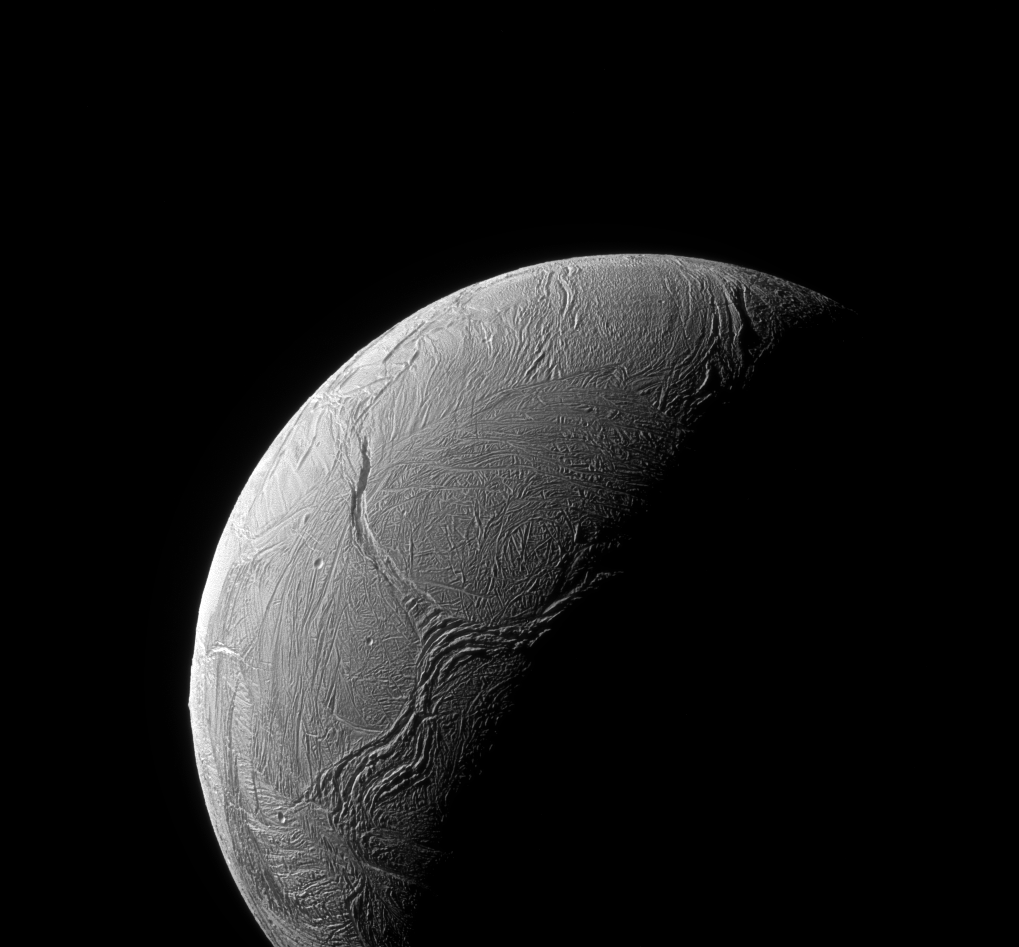Y Marks the Spot
| Credit | NASA/JPL-Caltech/Space Science Institute |
|---|---|
| Language |
|
A sinuous feature snakes northward from Enceladus' south pole like a giant tentacle. This feature, which stretches from the terminator near center, toward upper left, is actually tectonic in nature, created by stresses in Enceladus' icy shell.
Geologists call features like these on Enceladus (313 miles or 504 kilometers across) "Y-shaped discontinuities." These are thought to arise when surface material attempts to push northward, compressing or displacing existing ice along the way. Such features are also believed to be relatively young based on their lack of impact craters -- a reminder of how surprisingly geologically active Enceladus is.
This view looks towards the trailing hemisphere of Enceladus. North is up. The image was taken in visible green light with the Cassini spacecraft narrow-angle camera on Feb. 15, 2016.
The view was obtained at a distance of approximately 60,000 miles (100,000 kilometers) from Enceladus. Image scale is 1,900 feet (580 meters) per pixel.
The Cassini mission is a cooperative project of NASA, ESA (the European Space Agency) and the Italian Space Agency. The Jet Propulsion Laboratory, a division of the California Institute of Technology in Pasadena, manages the mission for NASA's Science Mission Directorate, Washington. The Cassini orbiter and its two onboard cameras were designed, developed and assembled at JPL. The imaging operations center is based at the Space Science Institute in Boulder, Colorado.
For more information about the Cassini-Huygens mission visit http://saturn.jpl.nasa.gov and http://www.nasa.gov/cassini. The Cassini imaging team homepage is at http://ciclops.org.




























